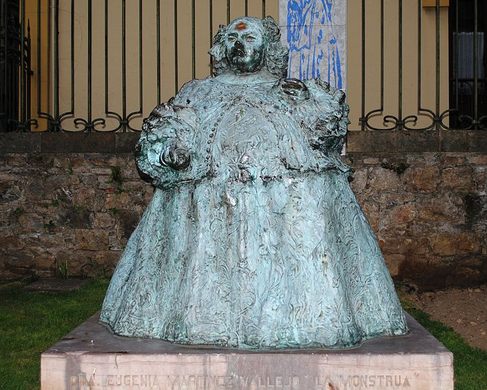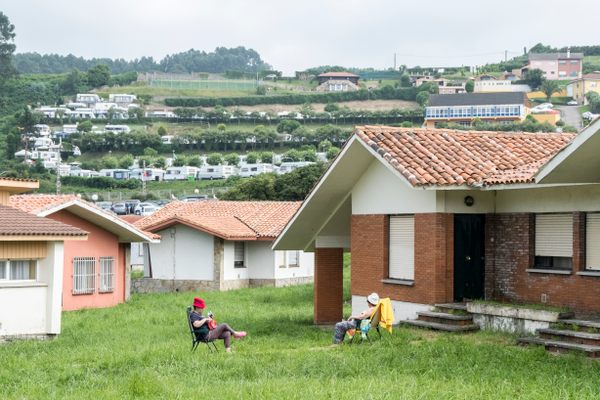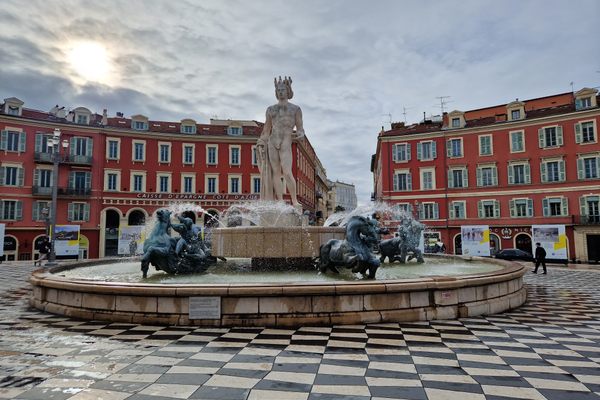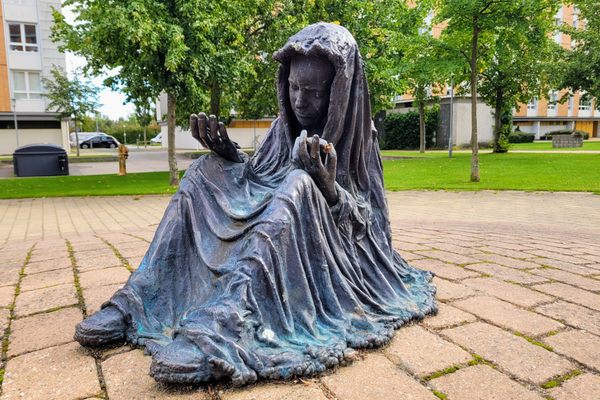AO Edited
Sculpture of Eugenia Martínez Vallejo
The young girl gained fame for her atypical size and was regarded as a curiosity by the Spanish aristocracy.
One Sunday in 1674, Antonia de la Bodega and José Martínez Vallejo entered their church in the small village of Merindad de Montija to attend mass. Antonia was several months pregnant and began to experience contractions so suddenly that she had no choice but to give birth to her daughter Eugenia inside the church. A church birth was so unusual that it was seen as a sign—this child would live an extraordinary life. But no one would have expected just how unique a life Eugenia Martinez Vallejo would actually live.
As an infant, Eugenia was always hungry and gained weight rapidly. The beauty standards of the time favored heavier frames on women, considering them beautiful and a sign of good fortune. But soon, Eugenia’s size exceeded societal norms. At one year old, Eugenia weighed 55 pounds. By the age of six, she had gained another 100 pounds.
Today, it is believed that Eugenia had Prader-Willi syndrome, a genetic disorder with symptoms that include constant hunger and extreme obesity. As Eugenia grew, news of her size reached the royal place. King Charles II had her summoned to his court—it was common at the time for monarchs and aristocrats to invite people with mental or physical disabilities to court. They were often dehumanized and displayed as if merely objects, whose shocking appearances were seen as entertainment for royal visitors. (Ironic, considering that Charles II is widely remembered for his own physical disabilities.)
While it could be argued that Eugenia’s quality of life improved when she joined the royal court, especially considering her impoverished beginnings, the young girl was being exploited. Although contemporary accounts mention that Eugenia was rather popular with visitors, who admired her beautiful face and enjoyed her pleasant personality, she was commonly referred to as “la monstrua” (the monster) and was not paid a wage for her time entertaining in court.
Charles II was so fascinated with Eugenia’s appearance that he commissioned the court painter Juan Carreno de Miranda to paint her portrait. The artist created two works using Eugenia as the model: The Monster Dressed in Finery and The Monster, Nude. For the former, it is said that Charles II “ordered that she be attired decorously, in the style of the palace, in a sumptuous dress with red and white brocade and silver buttons.” In the painting, she holds an apple in her left hand.
Unfortunately, the appropriate medical treatments for Eugenia’s condition were not known in the 17th century. Health issues common to Prader-Willi syndrome most likely contributed to her death at the young age of 24.
Eugenia’s life was further immortalized in a sculpture created by the artist Amado Gonzalez Hevia, also known as Favila. Based on one of Carreno’s portraits, the bronze statue of Eugenia is nearly life-sized. At the feet of the statue, the sculptor added a small mouse scurrying past Eugenia’s feet. This was added because a mouse was in Favila’s studio while he was working on the statue. It is often stolen and then replaced by the city, which has yet to come up with a way to better secure it.
The sculpture is one of the most popular in Aviles, with modern visitors still fascinated by Eugenia Martinez Vallejo’s size and uncommon beauty. Her image has captured historians as well—the paintings and sculpture of Eugenia have been referenced in scholarly works examining the history of Prader-Willi and other congenital disorders.
Know Before You Go
The statue of Eugenia Martinez Vallejo is located on Carreno Miranda street which is named after the painter of her portraits.



















Follow us on Twitter to get the latest on the world's hidden wonders.
Like us on Facebook to get the latest on the world's hidden wonders.
Follow us on Twitter Like us on Facebook